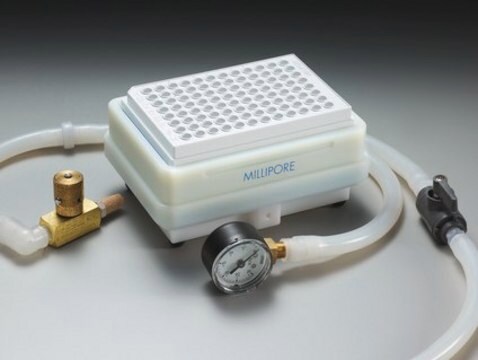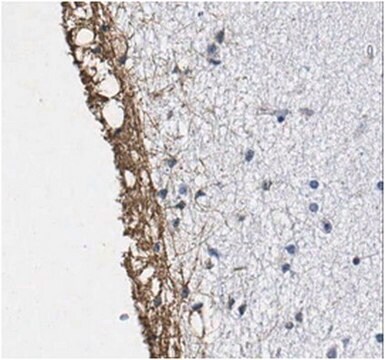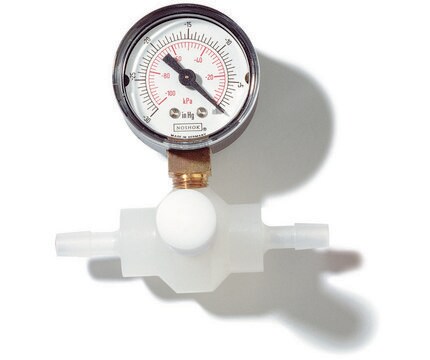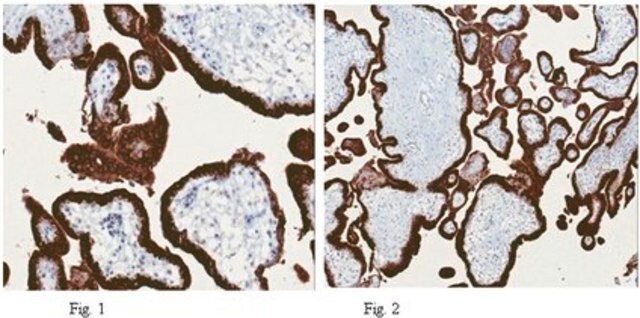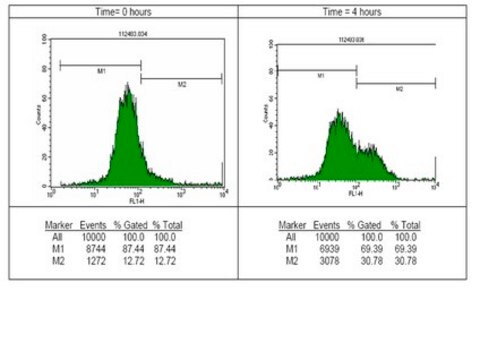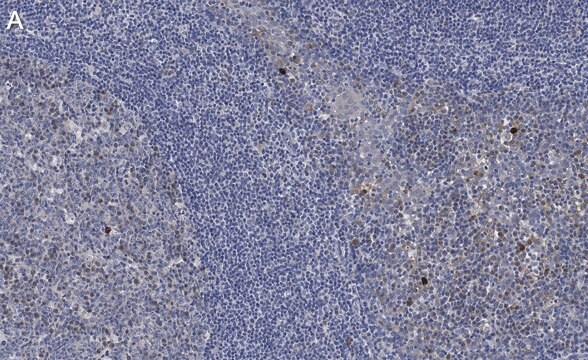MABN768
Anti-PrP, clone DRM2-118 Antibody
clone DRM2-118, from mouse
Synonim(y):
Major prion protein, PrP, PrP27-30, PrP33-35C, CD230
About This Item
Polecane produkty
pochodzenie biologiczne
mouse
Poziom jakości
forma przeciwciała
purified immunoglobulin
rodzaj przeciwciała
primary antibodies
klon
DRM2-118, monoclonal
reaktywność gatunkowa
rat, bovine, mouse, porcine, hamster, sheep, human
metody
ELISA: suitable
immunohistochemistry: suitable
western blot: suitable
izotyp
IgG2bκ
numer dostępu NCBI
numer dostępu UniProt
Warunki transportu
wet ice
docelowa modyfikacja potranslacyjna
unmodified
informacje o genach
human ... PRNP(5621)
Opis ogólny
Specyficzność
Immunogen
Zastosowanie
Neuroscience
Developmental Signaling
ELISA Analysis: A representative lot detected PrP in recombinant PrP proteins from multiple species by ELISA using DRM1-31, DRM1-60, and DRM2-118 (Stanker, L.H., et al. (2012). 31(5):314-24).
Immunohistochemistry Analysis: A representative lot detected PrP in hamster brain sections tissue with DRM1-31, DRM1-60, and DRM2-118 (Stanker, L.H., et al. (2012). 31(5):314-24).
Western Blotting Analysis: A representative lot detected PrP in normal brain extract from multiple spcecies using DRM2-118. DRM1-60, and DRM1-31 lysate (Stanker, L.H., et al. (2012). 31(5):314-24).
Jakość
Western Blotting Analysis: 0.5 µg/mL of this antibody detected PrP in 10 µg of mouse brain tissue lysate.
Opis wartości docelowych
Postać fizyczna
Przechowywanie i stabilność
Inne uwagi
Oświadczenie o zrzeczeniu się odpowiedzialności
Nie możesz znaleźć właściwego produktu?
Wypróbuj nasz Narzędzie selektora produktów.
Kod klasy składowania
12 - Non Combustible Liquids
Klasa zagrożenia wodnego (WGK)
WGK 1
Temperatura zapłonu (°F)
Not applicable
Temperatura zapłonu (°C)
Not applicable
Certyfikaty analizy (CoA)
Poszukaj Certyfikaty analizy (CoA), wpisując numer partii/serii produktów. Numery serii i partii można znaleźć na etykiecie produktu po słowach „seria” lub „partia”.
Masz już ten produkt?
Dokumenty związane z niedawno zakupionymi produktami zostały zamieszczone w Bibliotece dokumentów.
Nasz zespół naukowców ma doświadczenie we wszystkich obszarach badań, w tym w naukach przyrodniczych, materiałoznawstwie, syntezie chemicznej, chromatografii, analityce i wielu innych dziedzinach.
Skontaktuj się z zespołem ds. pomocy technicznej